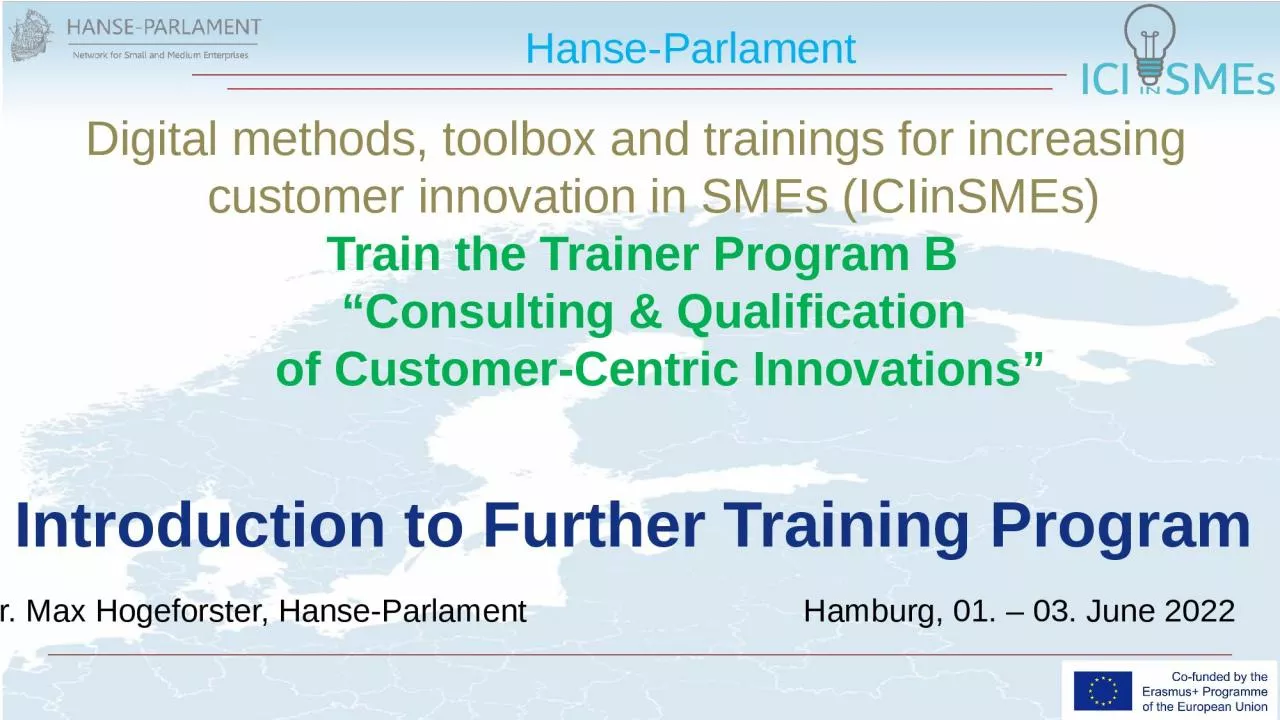PPT-Digital methods, toolbox and trainings for increasing
Author : jacey | Published Date : 2023-11-08
customer innovation in SMEs ICIinSMEs Train the Trainer Program B Consulting amp Qualification of CustomerCentric Innovations Introduction to Further Training
Presentation Embed Code
Download Presentation
Download Presentation The PPT/PDF document "Digital methods, toolbox and trainings f..." is the property of its rightful owner. Permission is granted to download and print the materials on this website for personal, non-commercial use only, and to display it on your personal computer provided you do not modify the materials and that you retain all copyright notices contained in the materials. By downloading content from our website, you accept the terms of this agreement.
Digital methods, toolbox and trainings for increasing: Transcript
Download Rules Of Document
"Digital methods, toolbox and trainings for increasing"The content belongs to its owner. You may download and print it for personal use, without modification, and keep all copyright notices. By downloading, you agree to these terms.
Related Documents














